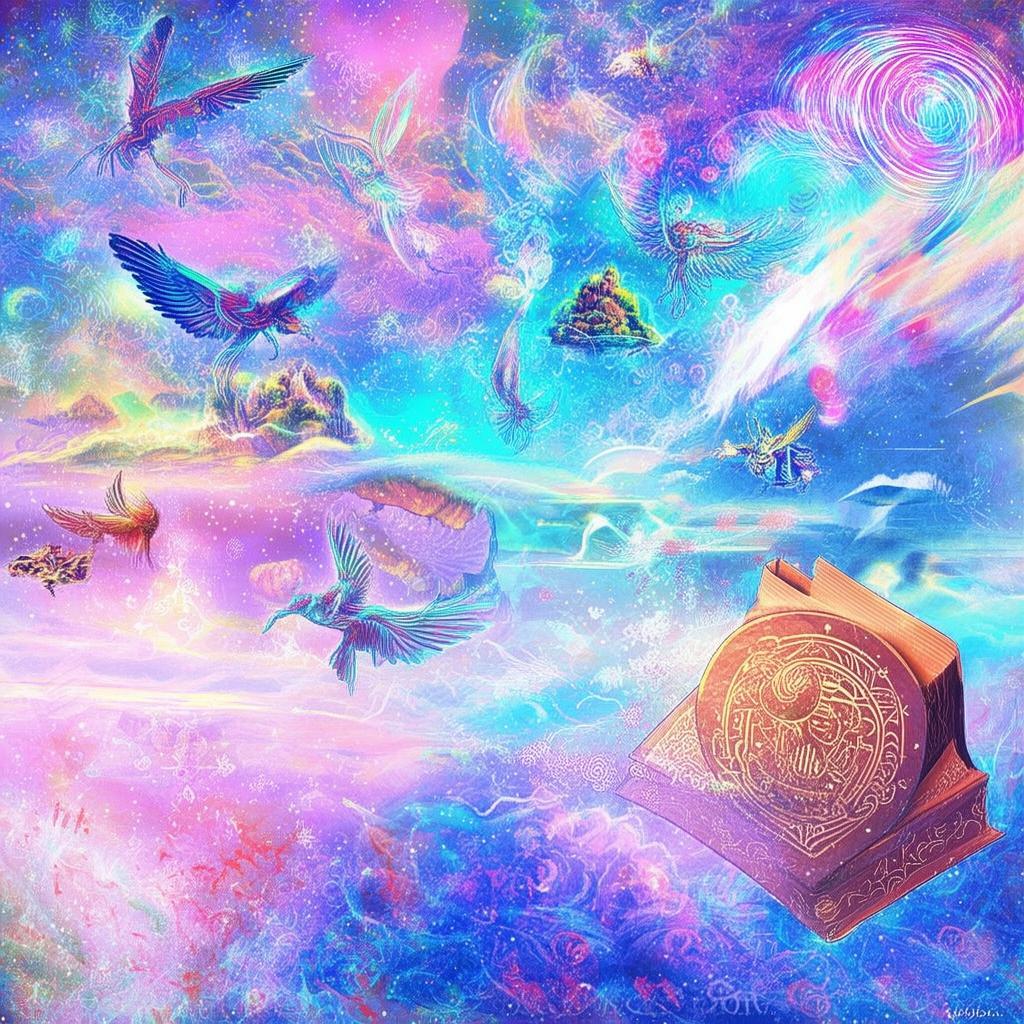The Emerald Triangle: A Philosophical Dilemma Unraveled
In the quiet town of Verdant Heights, the prestigious Verdant Heights Academy was known for its rigorous academic curriculum and its serene, picturesque campus. One such day, as the sun cast a golden glow over the school grounds, a group of curious students found themselves intrigued by a peculiar symbol etched into the wooden floorboards of their philosophy classroom.
The symbol, an intricate triangle with a leafy pattern at its center, was unlike anything they had seen before. It was as if the triangle were a key, waiting to unlock a hidden truth. The students, led by the enigmatic and deeply philosophical head of the class, Dr. Elara Voss, decided to investigate the origins of the Emerald Triangle.
Dr. Voss, with her piercing blue eyes and silver hair, was known for her unconventional teaching methods and her tendency to challenge the very fabric of reality. She had always been fascinated by the philosophical concepts of identity, ethics, and the nature of existence. The Emerald Triangle, she believed, was a metaphor for the complex interplay between these ideas.
As the students delved deeper into the symbol's history, they discovered that it was associated with a secret society known as the Emerald Triangle Society, which had been active in the town for centuries. The society was said to have been founded on the principle that true wisdom could only be achieved through the pursuit of truth, regardless of the consequences.
The students, led by the ambitious and idealistic Alex, decided to uncover the truth behind the society and its mysterious symbol. Their investigation led them to a series of philosophical debates, each more challenging than the last. They were forced to confront questions about the nature of identity, the ethics of knowledge, and the limits of human understanding.
One of the most profound debates involved the concept of free will. The students were divided on whether they truly had the freedom to make choices or if their actions were predetermined by an unseen force. The debate became particularly heated when Alex, who believed in the power of free will, was confronted with a series of seemingly impossible tasks that seemed to challenge his very sense of self.
As the students continued their investigation, they began to notice strange occurrences around the school. Objects would appear and disappear at random, and voices would whisper cryptic messages in the dead of night. The students were unsure whether these events were connected to the Emerald Triangle or if they were the result of their own heightened sense of awareness.

The climax of their adventure came when they discovered that the Emerald Triangle was not just a symbol; it was a metaphor for the human condition itself. The triangle represented the three fundamental aspects of human existence: the physical world, the emotional realm, and the intellectual domain. To truly understand the symbol, they would need to explore each aspect of their own identities.
In a dramatic twist, Dr. Voss revealed that she was a member of the Emerald Triangle Society and that the symbol had been placed in the classroom as a test of the students' character. She challenged them to choose between their personal desires and the greater good, a choice that would define their future.
The students faced a moral dilemma: to follow their hearts and pursue their own happiness, or to embrace the greater truth and help others. In the end, they chose to embrace the truth, realizing that the pursuit of wisdom was not about personal gain, but about the betterment of all humanity.
The story of the Emerald Triangle came to a close with the students graduating from Verdant Heights Academy, forever changed by their experience. They had learned that the true power of the triangle lay not in the symbol itself, but in the journey of self-discovery and the pursuit of wisdom that it represented.
The Emerald Triangle: A Philosophical Dilemma Unraveled was not just a tale of mystery and discovery; it was a reflection on the human condition and the eternal quest for understanding. The story left readers pondering the nature of reality, the ethics of knowledge, and the power of choice.
✨ Original Statement ✨
All articles published on this website (including but not limited to text, images, videos, and other content) are original or authorized for reposting and are protected by relevant laws. Without the explicit written permission of this website, no individual or organization may copy, modify, repost, or use the content for commercial purposes.
If you need to quote or cooperate, please contact this site for authorization. We reserve the right to pursue legal responsibility for any unauthorized use.
Hereby declared.









